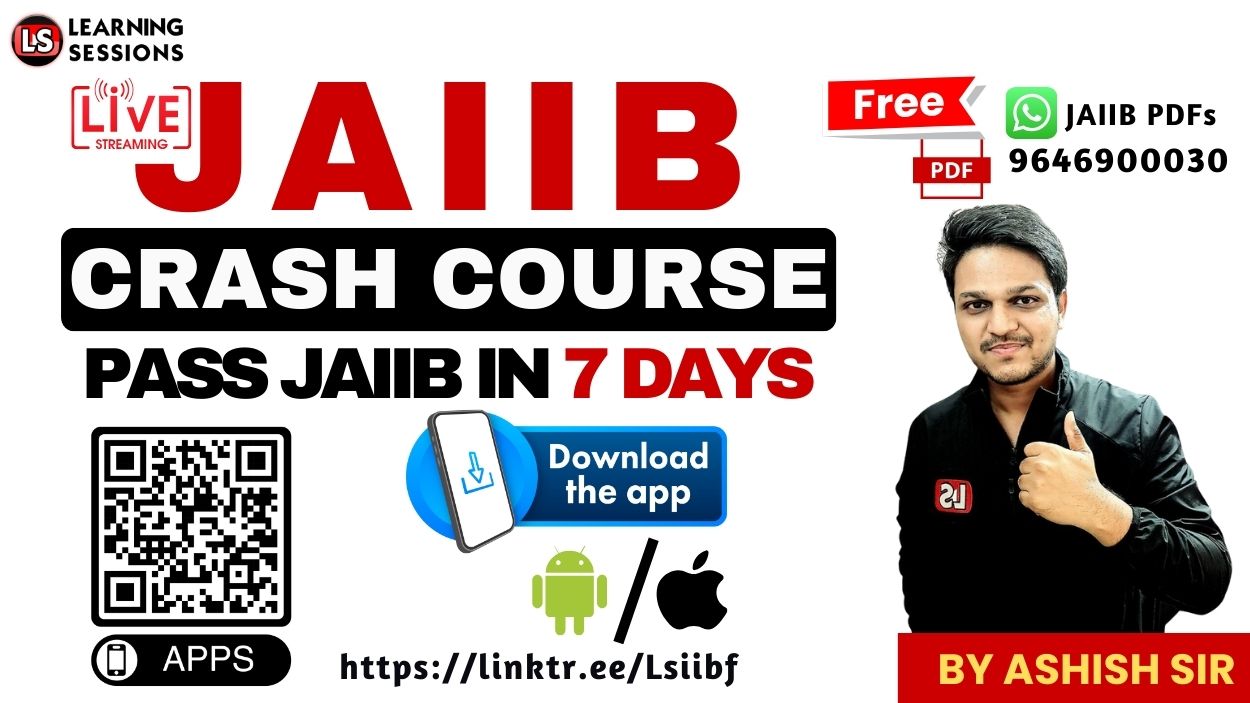Are you preparing for the Treasury Investment and Risk Management (TIRM) Diploma but struggling with short-term instruments and liquidity operations? This article is your comprehensive guide to the Money Market – a cornerstone for Paper 1.
👉 Don’t forget to watch the full video and share it with your colleagues preparing for IIBF certifications.
📽️ Watch the Full Video
👉 Before we dive deep, watch this complete breakdown of Money Market concepts in Hindi-English mix:
🏦 What is the Money Market?
The Money Market is a segment of the financial system handling borrowing and lending of funds for less than one year. It’s the go-to market for liquidity and short-term financial instruments. The money market comprises a wide range of instruments and players including banks, government entities, corporations, and mutual funds.
- Maturity: Instruments mature in 1 year or less
- Liquidity: Highly liquid and easily tradable
- Risk: Very low due to high credit quality
- Returns: Lower than capital markets
- Participants: RBI, Banks, Corporates, Govt, FIs, Mutual Funds
- Purpose: Short-term funding, managing liquidity, supporting monetary policy
Money markets allow for efficient utilization of idle funds, enabling economic entities to meet their working capital and liquidity needs quickly.
📊 Who Regulates the Money Market?
The Reserve Bank of India (RBI) regulates the Indian Money Market. It uses various instruments such as the Cash Reserve Ratio (CRR), Statutory Liquidity Ratio (SLR), and open market operations (OMOs) to manage money supply and interest rates. In contrast, the Securities and Exchange Board of India (SEBI) regulates capital markets, which involve long-term funds.
RBI ensures smooth functioning, transparency, and adequate liquidity in the system by regulating participants and practices in the money market. The money market also plays a vital role in implementing the RBI’s monetary policy objectives.
💸 Key Instruments in the Money Market
1️⃣ Treasury Bills (T-Bills)
These are short-term debt instruments issued by the Central Government. They are zero-coupon securities, meaning they do not pay interest but are issued at a discount and redeemed at face value.
- Tenors: 91, 182, 364 days
- Risk-free investment
- Used to manage short-term funding needs of the government
2️⃣ Certificate of Deposit (CD)
CDs are issued by banks and financial institutions to raise short-term funds. They are negotiable and issued in dematerialized form.
- Issued at a discount and redeemed at par
- Traded in the secondary market
- Tenure typically ranges from 7 days to 1 year
3️⃣ Commercial Paper (CP)
CPs are unsecured promissory notes issued by companies with high credit ratings. They are used to meet short-term liabilities.
- Maturity: 15 days to 1 year
- Issued at discount and redeemed at face value
- Backed by the reputation of the issuer
4️⃣ Call, Notice & Term Money
These instruments are mainly used for interbank lending to manage short-term mismatches in liquidity.
- Call Money: Overnight borrowing/lending
- Notice Money: 2–14 days
- Term Money: 15 days to 1 year
5️⃣ CBLO (Collateralized Borrowing & Lending Obligation)
Developed by the Clearing Corporation of India Ltd. (CCIL), CBLO facilitates borrowing and lending against government securities.
- Ideal for entities without access to call money market
- Collateral-based lending for enhanced safety
- Tenure: 1 day to 1 year (based on RBI guidelines)
[FREE PDF] IIBF TIRM | Chapter 1 Financial Markets | Most Important Questions
🌀 Repo & Reverse Repo
Repo (Repurchase Agreement): An instrument where a party sells securities with an agreement to repurchase them at a specified date and price. It is used to manage short-term liquidity.
Reverse Repo: The counter transaction where RBI borrows money from banks by offering government securities as collateral.
Tri-Party Repo: Similar to a traditional repo but includes a third-party agent to manage the transaction securely.
🔁 Rediscounting of Bills
In a rediscounting transaction, a bank that has purchased a Bill of Exchange from a business entity (discounted it) further sells it to another financial institution. This helps banks in managing their liquidity more effectively.
- Bills must arise from genuine trade transactions
- Should not be encumbered or pledged elsewhere
- Maximum tenure allowed: 90 days
🤝 Inter-Bank Participation Certificates (IBPC)
These certificates are used by banks to share the credit risk associated with loans. It allows one bank to participate in another bank’s loan assets for a specified time and share the income.
- Participation capped at 40% of outstanding loan
- Non-transferable and must be held till maturity
- Interest rate mutually agreed between banks
🏢 Investment Rules for Insurers & NBFCs
General Insurance Companies
- Can invest in approved securities like Government Bonds and Treasury Bills
- Not allowed to raise funds from the money market
Non-Banking Financial Companies (NBFCs)
- Must invest at least 15% of their Net Worth in SLR securities
- Ensures solvency and regulatory compliance
📥 Download PDF Notes
Click here to download full Money Market PDF notes including diagrams, solved MCQs, and illustrations. These notes cover all instruments, examples, and recent updates from RBI.
🏁 Conclusion
The Money Market is a powerful financial tool that supports the economy by maintaining liquidity, supporting monetary policy, and providing secure investment avenues. For TIRM aspirants, mastering this topic is not optional – it’s foundational.
With tools like Repo, CBLO, Rediscounting, and various money market instruments, professionals gain the knowledge to manage short-term funds effectively and make sound treasury decisions.
👉 Use this guide to revise, practice mock tests, and share with your peer group. Subscribe to stay updated on our next topic: Capital Markets.
Also Like:







